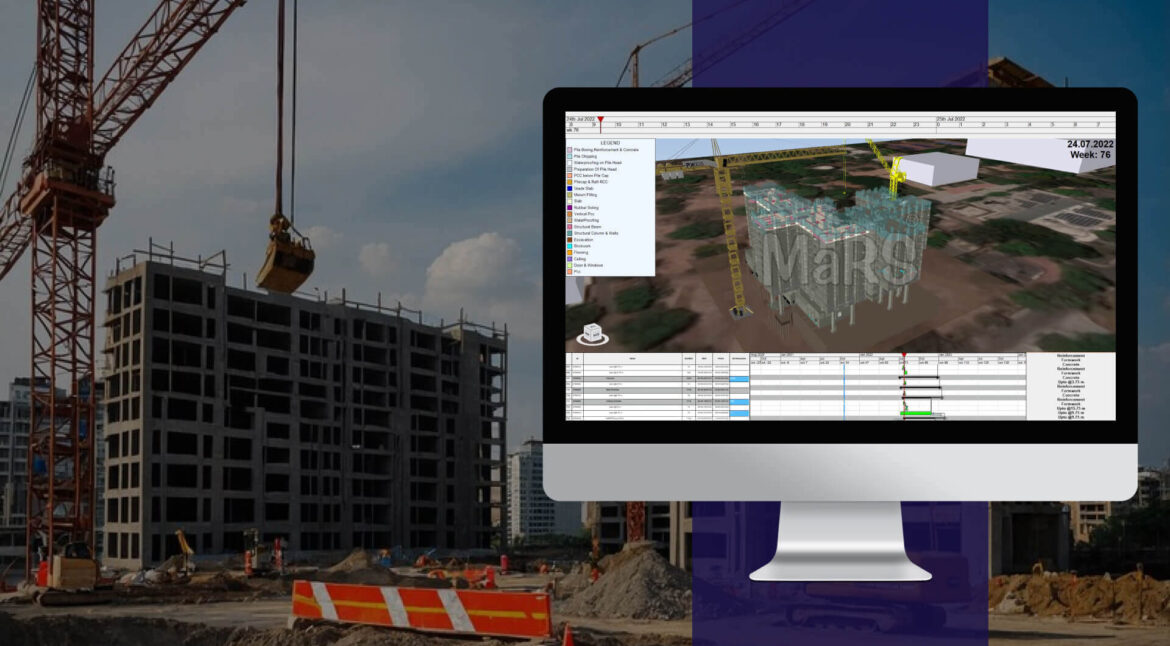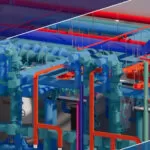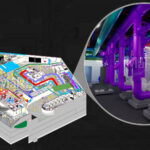Construction management has been revolutionized by Building Information Modeling (BIM), which offers solutions that maximize a building’s life cycle at every stage, from planning and design to construction and facility management. In ways that were impossible only a few decades ago, its adoption has simplified workflows, decreased errors, and increased productivity. The many advantages of BIM in construction management and how it has transformed the sector will be covered in detail in this comprehensive guide.
Benefits of BIM in Construction Management
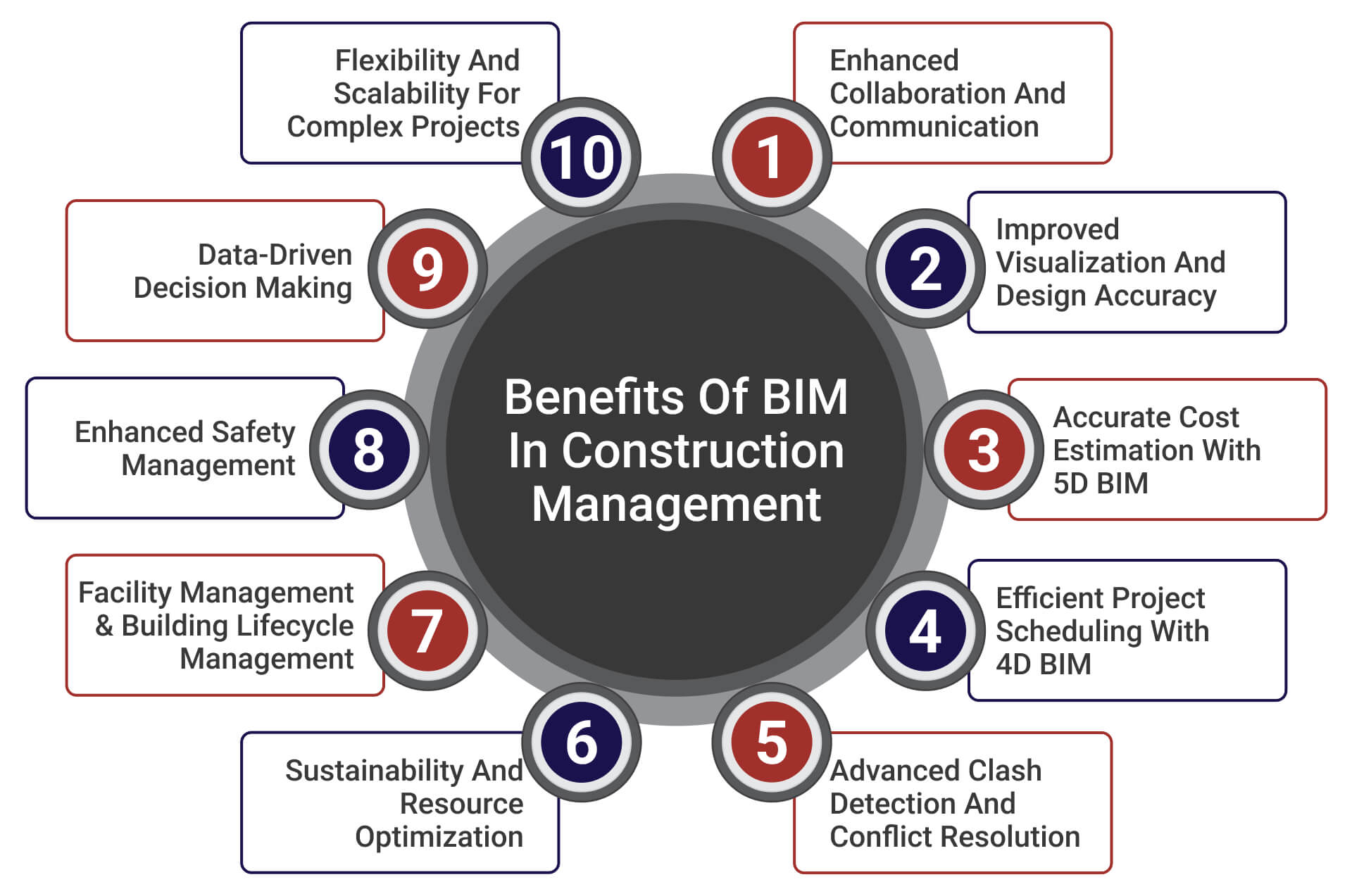
Enhanced Collaboration and Communication
Architects, engineers, contractors, and owners are just a few of those who can contribute and access real-time information in a centralized digital environment created by BIM, which promotes improved collaboration. Traditionally, construction projects involved separate teams working on different aspects of a design, which frequently resulted in conflicting or misinterpreted changes. All inputs are integrated into a single model using BIM, which solves this problem and guarantees that everyone always has access to the most recent information.
Decision-making speeds up with this transparency and also improves team communication. When adjustments are required, the shared BIM model automatically updates to reflect the changes, ensuring consistency and clarity throughout the entire project lifecycle.
Improved Visualization and Design Accuracy
The success of BIM can be attributed in large part to its capacity to produce accurate and complete 3D visual representations of a building well in advance of the beginning of construction. With BIM, stakeholders can see the structure from every perspective, whereas traditional 2D drawings frequently allow for misunderstandings. All parties involved can clearly understand the dimensions, spatial relationships, and design intent because of these models.
Furthermore, early identification of possible design flaws through 3D BIM Modeling Services enables corrections to be made before the construction phase begins. Clients can request revisions and adjustments before the start of actual work by using virtual walkthroughs and simulations, which offer a realistic view of the project.
Related blog: The Role of BIM in MEP System Fault Detection
Advanced Clash Detection and Conflict Resolution
The capacity of BIM to identify conflicts between different building systems (such as HVAC, electrical, and plumbing) before they occur on the construction site is a key advantage. Traditional methods depend on different designs for various fields, which may give rise to disputes during the implementation of these systems. All of these systems are integrated into a single model by BIM, enabling automatic clash detection.
Early detection and resolution of conflicts through Clash Detection Services reduce the need for costly on-site adjustments and help prevent delays. This proactive approach enables smoother coordination among the various trades involved in the construction process, leading to more efficient project delivery.
Efficient Project Scheduling with 4D BIM
Construction time management is crucial, and BIM helps by tying the design model to the project schedule (a technique called 4D BIM). Because of this integration, complete construction schedules with each phase linked to a particular building component are possible. Project managers can find possible obstacles, better understand how various tasks relate to one another, and allocate resources more quickly by visualizing the construction process step-by-step.
The project can stay on track by utilizing the 4D BIM Construction Schedule to forecast delays and adjust timelines, allowing for the simulation of the construction sequence and avoiding potential conflicts.
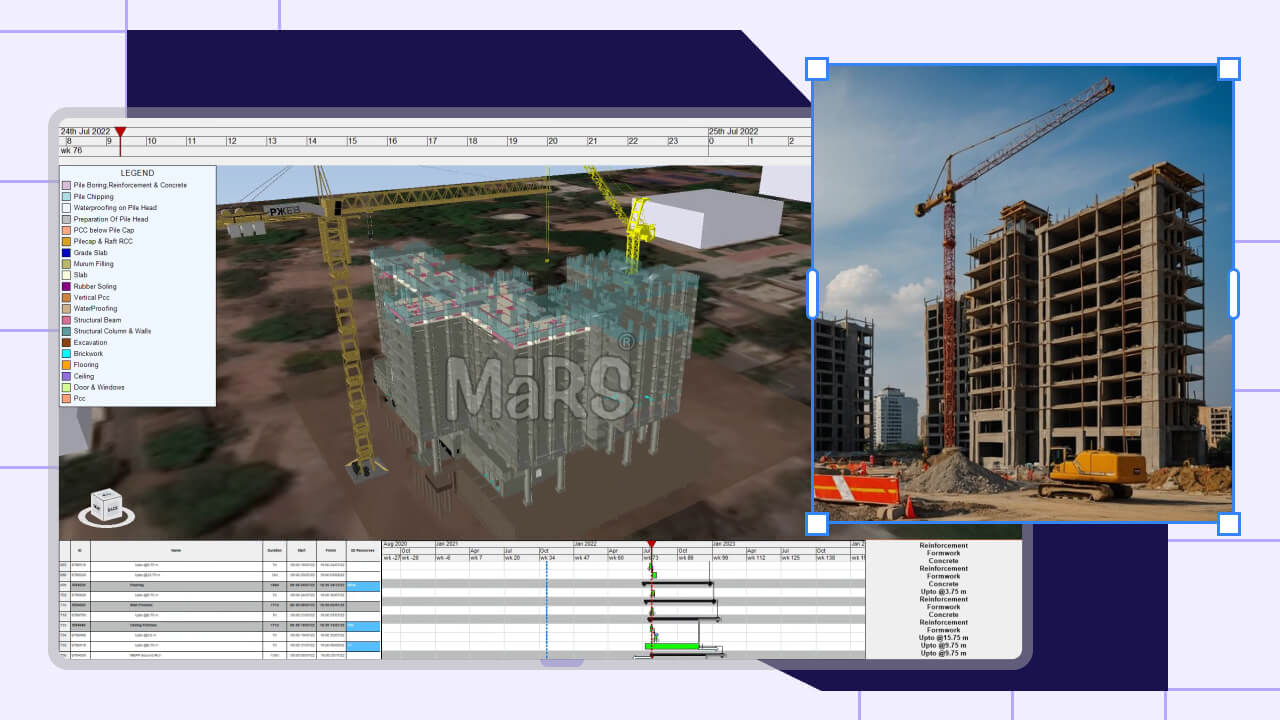
Accurate Cost Estimation with 5D BIM
Adding cost information to BIM—also known as 5D BIM—enables extremely precise cost estimation. All design components, including labor and materials, have a cost associated with them, making it possible to track project finances in real-time. Project managers can create detailed budgets that accurately reflect the requirements of the design with this approach.
Furthermore, with 5D BIM Construction Estimation Planning, modifications to the design can be quickly integrated into the cost estimate, ensuring that any changes remain within the project’s budgetary constraints. Since 5D BIM provides more accurate cost forecasting compared to traditional estimation methods, it plays a key role in preventing cost overruns and keeping the project financially on track.
Sustainability and Resource Optimization
Construction is now heavily focused on sustainability, and building information modeling (BIM) is essential to maximizing resource use. Project teams can simulate various design and material options with BIM to assess their environmental impact. Making environmentally friendly decisions is made easier because of this, including cutting waste during construction, choosing sustainable materials, and optimizing energy use.
By ordering only the necessary materials, BIM’s accurate material take-offs help to further reduce waste and promote more sustainable practices. Additionally, it helps in the planning of energy-efficient building systems that have the potential to lower long-term building operating costs.
Facility Management and Building Lifecycle Management
BIM is used throughout the facility management stage as well as during construction. After the building is finished, the BIM model serves as an invaluable resource for facility managers, offering detailed information on the systems, parts, and maintenance plans of the structure. This digital data repository makes it possible to plan maintenance, upgrade systems, and manage space more effectively.
Repairs and renovations can be completed more quickly and affordably when an accurate as-built model is available. To ensure that it continues to be an accurate representation of the structure for the duration of its lifecycle, the BIM model can also be updated as changes are made to the building.
Enhanced Safety Management
In the construction industry, safety is a top priority, and building information modeling (BIM) helps to improve site safety. BIM helps in identifying potential safety risks before the start of construction by providing complicated simulations of the construction sequences. Project managers are better able to create safer work environments and put risk reduction plans into action. BIM also makes it possible to visualize safety systems and emergency exits, which guarantees code compliance and increases the building’s safety for future occupants.
Data-Driven Decision Making
Project managers and other stakeholders can make better decisions by using real-time, accurate data, which is made possible by BIM. BIM offers a comprehensive view of the project by combining multiple datasets, including those for materials, prices, schedules, and system designs. When it comes to choosing materials, modifying schedules, or optimizing resources, data-driven choices result in better project outcomes and more effective project execution for all stakeholders.
Related blog: Why did contractors require MEP BIM for a construction project?
Flexibility and Scalability for Complex Projects
Because of its great flexibility and scalability, BIM can be used for a variety of projects, from modest residential construction to large-scale infrastructure developments. The capacity to manage intricate designs and multi-stage projects offers increased authority over each aspect of the building. Better control and precision are possible with scalable project management thanks to BIM, whether you’re managing the small details of a skyscraper or coordinating teams across multiple locations.
Because of its adaptability, BIM for construction management is a great tool for projects whose needs change over time because it permits simple design changes without affecting the entire model.
Conclusion
There are several advantages to using BIM in construction management, including increased post-construction management and project sustainability, as well as improved teamwork and fewer mistakes. It is now an essential tool for making sure that projects are completed on schedule, within budget, and to the highest possible standards of quality. The integration of BIM will become even more crucial as the construction industry develops to optimize workflows and provide better results for all parties involved.
FAQs on the Benefits of BIM in Construction Management
How does BIM contribute to sustainability in construction management?
BIM promotes sustainability by enabling the analysis of design options for their environmental impact, optimizing resource usage, and minimizing material waste throughout the construction process.
How does BIM enhance safety in construction management?
BIM improves safety by simulating construction processes to identify potential risks, allowing project managers to implement safety measures proactively and ensure compliance with regulations.
Is BIM suitable for complex construction projects?
Absolutely. BIM’s scalability and flexibility make it an ideal tool for managing complex construction projects, allowing for efficient handling of intricate designs and evolving requirements.
What technology is required to implement BIM in construction management?
Implementing BIM typically requires specialized software (like Autodesk Revit, ArchiCAD, or Bentley Systems) and hardware capable of handling 3D BIM Modeling Services and large datasets. Additionally, training for team members is essential to maximize its effectiveness.
What impact does BIM have on project timelines in construction management?
BIM can significantly shorten project timelines by streamlining workflows, improving coordination, and reducing the time spent on rework due to design errors or miscommunications.
How does BIM contribute to better resource management in construction?
BIM improves resource management by providing detailed insights into material requirements and scheduling, helping project managers allocate resources efficiently and minimize waste.
How does BIM help in risk management for construction projects?
BIM aids in risk management by enabling detailed simulations and analyses of construction processes, allowing teams to identify potential risks early and develop mitigation strategies proactively.
What are the long-term benefits of using BIM in construction management?
The long-term benefits of using BIM include improved building performance, reduced operational costs, enhanced facility management capabilities, and a more sustainable approach to construction and maintenance.
Is it difficult to transition from traditional methods to BIM in construction management?
Transitioning to BIM can be challenging, particularly for teams accustomed to traditional methods. However, with proper training, stakeholder buy-in, and gradual implementation, the benefits of BIM can outweigh the initial challenges, leading to improved project outcomes.

